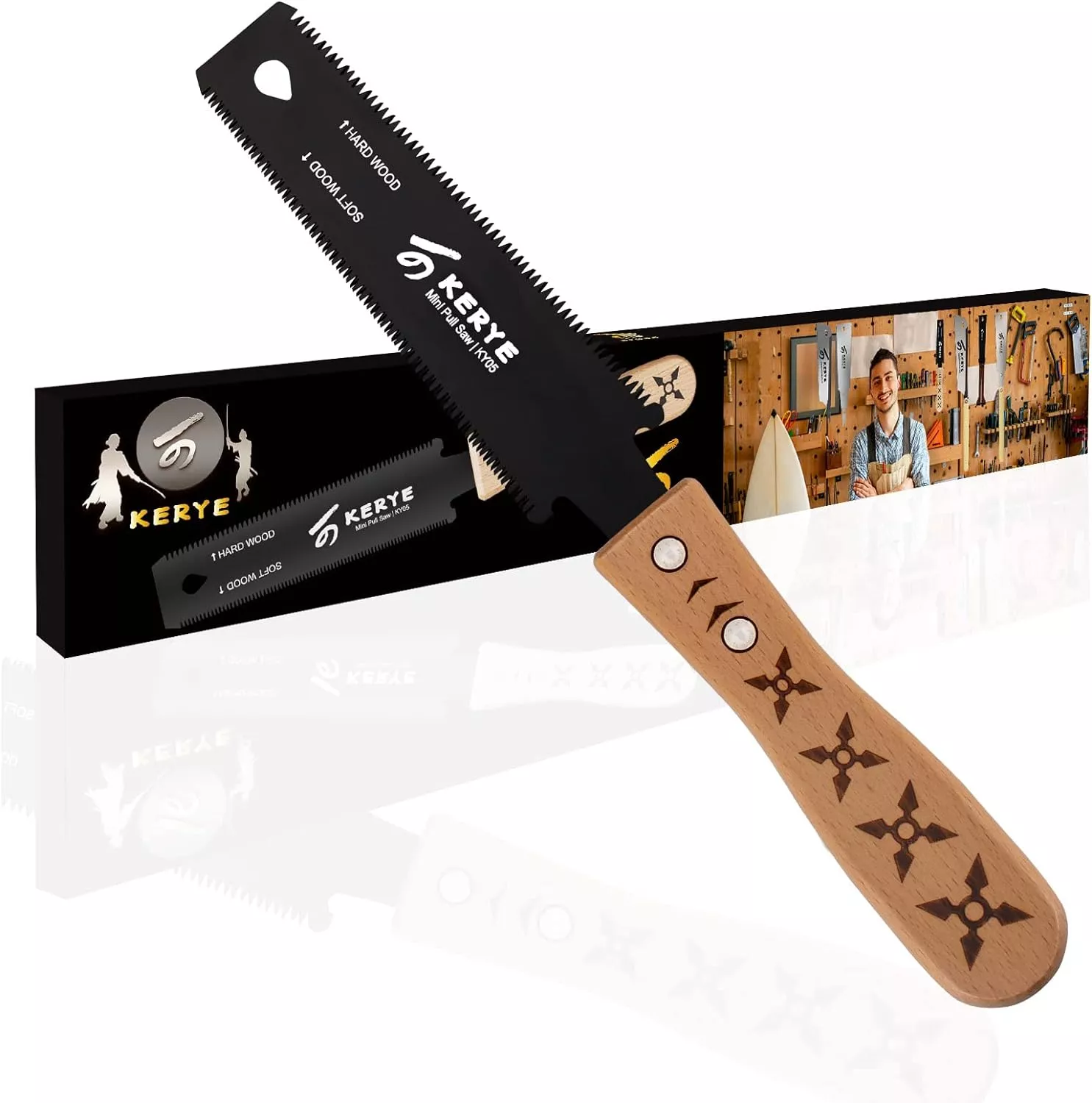
In the world of woodworking, the right tools can make all the difference. The KERYE Mini Hand Saw, a lightweight and versatile Japanese pull saw, is designed for woodworkers seeking precision and ease. In this article, we delve into its features, advantages, and tips for getting the most out of this remarkable tool.
Product Features
| Feature | Description |
|---|---|
| Blade Material | Durable SK5 high-carbon steel |
| Blade Length | 6 inches |
| TPI | 11 TPI for rip cuts; 17 TPI for cross cuts |
| Handle Material | Non-slip beech wood |
| Weight | 2.82 oz |
| Design | Double-sided with 3-sided hardened teeth |
| Customer Support | 24 months after-sale support |
Product Overview
| Pros | Cons |
|---|---|
| Excellent for precision cutting | May not be suitable for very thick materials |
| Lightweight and portable | Requires regular maintenance for longevity |
| Beautiful design with non-slip handle | Limited blade size |
Understanding Japanese Pull Saws
Understanding Japanese pull saws opens up a new dimension in woodworking, particularly when it comes to tools like the KERYE Mini Hand Saw. Unlike Western push saws, which require considerable force to drive the blade through wood, Japanese pull saws function by pulling the blade towards the user. This method offers distinct advantages. Firstly, the blades of pull saws are typically thinner than those of push saws, allowing for cleaner, more precise cuts. The reduced blade thickness enhances cutting efficiency, enabling the user to achieve fine detail without unnecessary effort.
With the KERYE Mini Hand Saw, I’ve experienced firsthand how the design and mechanics of a pull saw can transform a project. The ergonomic grip encourages a comfortable hand position, reducing strain during extended use. As I pull the blade through the wood, the smooth motion minimizes resistance, allowing me to focus on accuracy rather than exertion. The weight distribution and balance of the KERYE also contribute to a seamless cutting experience.
Additionally, the pull saw’s ability to create clean kerf results in less tear-out, making it ideal for delicate applications. Whether I’m crafting intricate designs or making simple cuts, understanding the nuances of pull saw mechanics with the KERYE Mini Hand Saw has truly enhanced my woodworking ability.
Maximizing Efficiency with the KERYE Mini Hand Saw
Once I’ve become comfortable with the KERYE Mini Hand Saw’s features, the next step is honing techniques for optimal results. When cutting, maintaining a steady hand while applying gentle pressure is key; the design of this saw allows for precision without excessive force. I recommend starting with softer woods like pine or poplar as these materials make it easier to grasp the mechanism and improve your cutting technique.
For intricate cuts or detailed work, it’s beneficial to visualize the cut line beforehand to ensure accuracy. I often draw my cutting line lightly with a pencil, which can help guide the saw and minimize mistakes. Likewise, using the correct angle while cutting not only enhances precision but also contributes to cleaner edges.
Maintenance of the KERYE Mini Hand Saw is crucial for ensuring long-term performance. After each use, I wipe the blade with a dry cloth to remove sap and debris. Periodically, applying a light coat of lubricant to the blade can prevent rust and facilitate smoother cuts. Additionally, always store the saw in a protective case or sheath to avoid accidental damage.
Whether you are a beginner or seasoned woodworker, these tips will help elevate your woodworking projects by unlocking the full potential of the KERYE Mini Hand Saw, making each cut more efficient and precise.
Conclusions
The KERYE Mini Hand Saw offers an exceptional balance of precision, portability, and ease of use. Whether you’re a seasoned woodworker or a DIY enthusiast, this tool can elevate your craftsmanship. Investing in quality equipment like the KERYE Mini Hand Saw can transform your woodworking experience, making it more enjoyable and efficient.